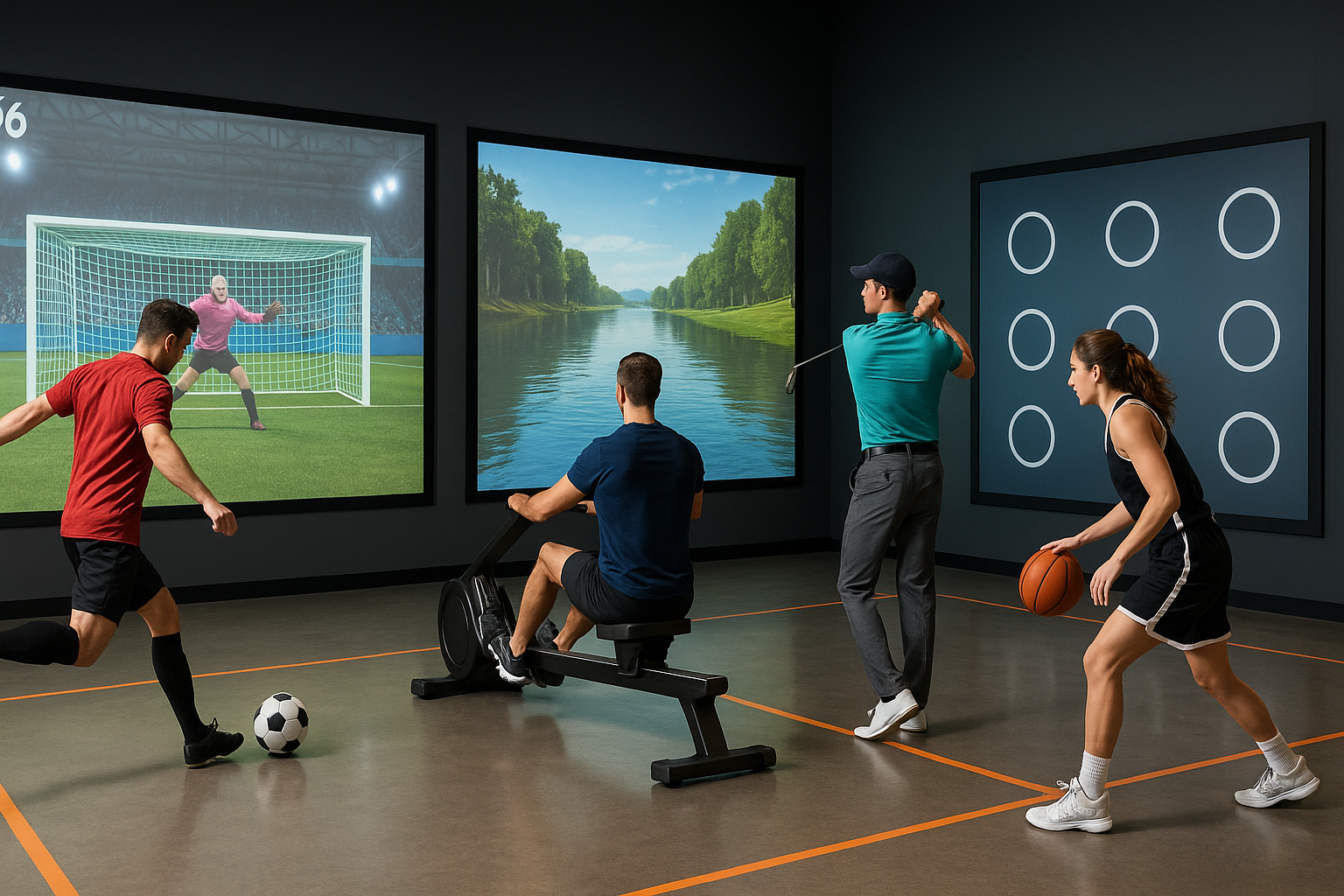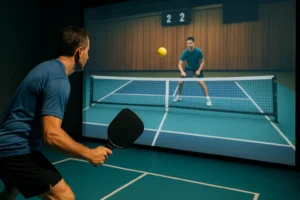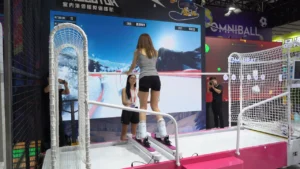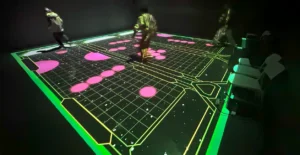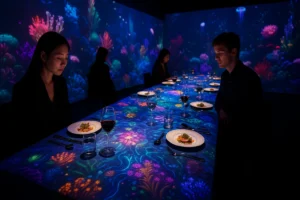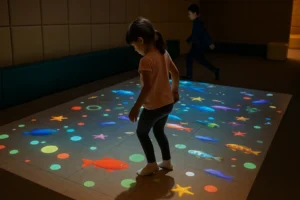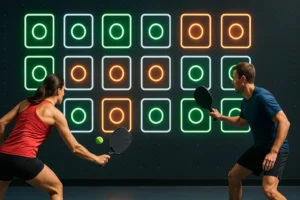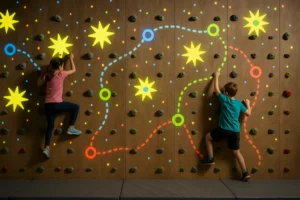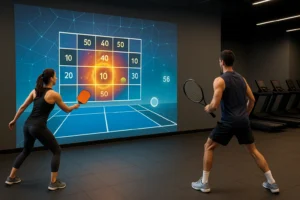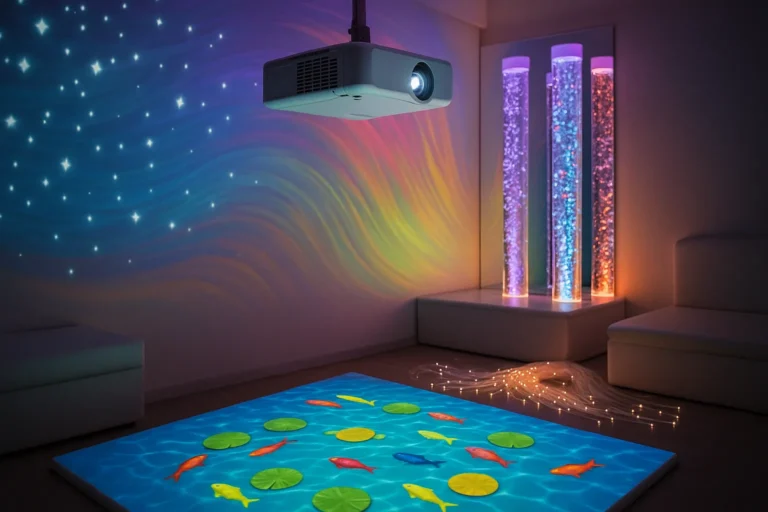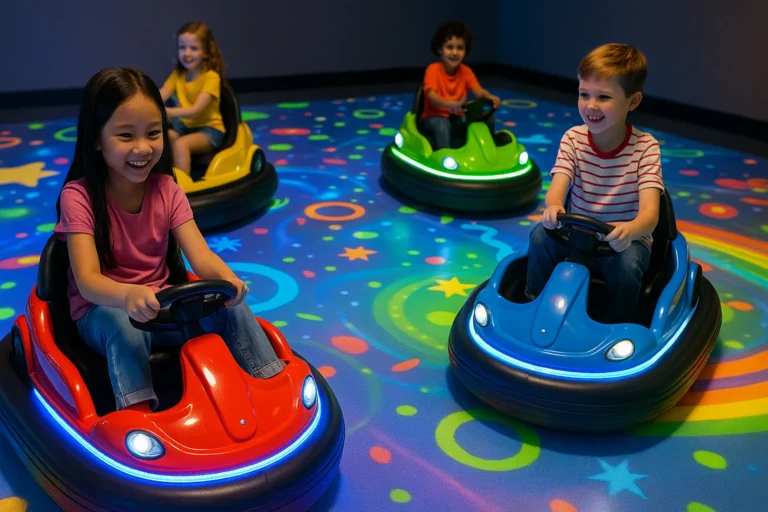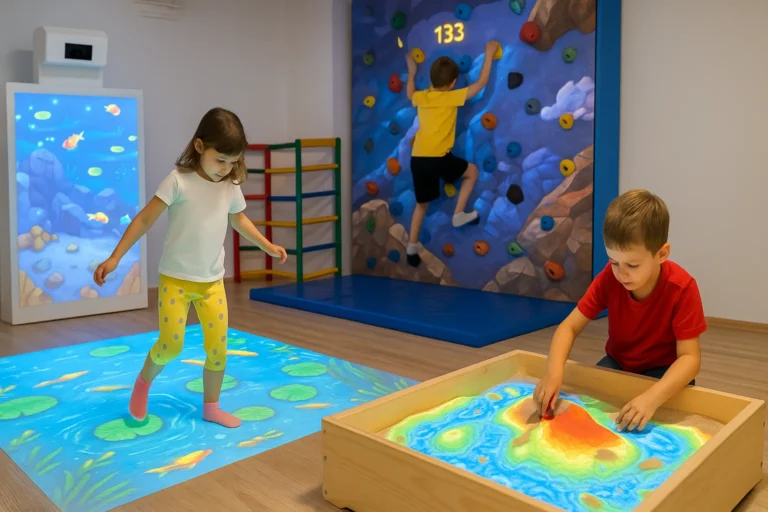Why Do We Need an Interactive Sports Complex Center?
🏟 In a world where digital experiences blend seamlessly with physical activity, the demand for interactive sports complex centers is skyrocketing. Traditional gyms and sports halls often focus solely on physical training, but the modern athlete — whether casual or professional — wants more. They expect immersive systems, real-time performance analytics, and engaging game-like environments.
An interactive sports complex is more than a building; it’s a dynamic ecosystem that uses advanced software, projection technology, and simulator systems to turn training into an interactive game. Imagine practicing soccer on an indoor soccer training wall projection that responds to your shots with instant feedback, rowing through virtual rivers with an interactive rowing fitness simulator, or perfecting your swing on a golf training device that tracks every detail of your shot.
Comparative Introduction: Tools and Technologies for Interactive Sports Complexes
When planning a multi-sport ball center plan, understanding the available systems is key. Here are the main categories of technology:
1. Projection-Based Training Systems
- Indoor Soccer Training Wall Projection — Simulates real opponents, provides scoring feedback, and adjusts game difficulty automatically.
- Price range: Mid to high, depending on software complexity and projection size.
2. Simulator-Based Devices
- Interactive Rowing Fitness Simulator — Mimics real-world water resistance and connects to immersive game maps for virtual races.
- Golf Training Device — Uses advanced sensors to analyze swing mechanics and offer corrective advice.
3. Hybrid Multi-Sport Systems
- A single multi-sport ball game system that supports basketball, tennis, baseball, and more with switchable game modes.
- These are cost-effective for large facilities aiming to offer multiple activities without separate rooms.
Advantages and Disadvantages: Interactive vs. Traditional Sports Centers
| Feature | Interactive Sports Complex | Traditional Sports Center |
|---|---|---|
| Engagement | 🎯 High – game-like training keeps users motivated | Moderate – repetitive drills may cause drop-off |
| Technology | Uses advanced software systems and simulators | Minimal tech; basic equipment only |
| Space Utilization | Flexible – one area can host multiple sports | Fixed layouts for each sport |
| Analytics | Real-time tracking & performance data | Limited or no performance feedback |
| Price & Setup | Higher upfront cost; scalable revenue potential | Lower cost but fewer revenue streams |
Recommendations for Real-Life Scenarios
💼 For Schools & Universities
- Install multi-sport ball center systems to encourage active participation among students.
- Use indoor soccer training wall projection for team practice and skill analysis.
🏢 For Corporate Wellness Programs
- Introduce interactive rowing fitness simulators to promote fitness while fostering team-building through competitive virtual races.
🎯 For Commercial Sports Centers
- Offer golf training devices to attract golf enthusiasts and integrate with lesson packages.
- Create a membership tier that includes access to all interactive systems for a premium price.
🌍 For City Recreation Departments
- Build hybrid facilities to serve both professional training needs and casual community events.
- Partner with a reputable supplier and manufacturer like OneCraze to ensure the latest technology and professional installation.
Differences Between Interactive Sports Complexes and Traditional Centers
- Purpose & Audience — Traditional centers target mainly sports practitioners, while interactive complexes also attract tech-savvy youth, families, and tourists.
- Technology Integration — Interactive facilities rely heavily on game-based software and immersive projection systems.
- Revenue Streams — Traditional gyms rely on memberships; interactive centers can host e-sport tournaments, VR leagues, and experiential events.
- Flexibility — One interactive court can be transformed from basketball to tennis in seconds, whereas traditional setups are fixed.
The price depends on factors like location, size, and technology level. For a mid-sized facility (about 500–800 m²) with systems like an indoor soccer training wall projection, interactive rowing fitness simulator, and a golf training device, expect an investment between $150,000 and $300,000. This includes hardware, software licenses, installation, and initial training for staff. High-end complexes with multi-floor setups and multi-sport ball center plans can go beyond $500,000.
Space requirements vary:
Indoor Soccer Training Wall Projection: Minimum 5×10 meters with at least 4 meters ceiling height.
Interactive Rowing Fitness Simulator: 2×3 meters per unit.
Golf Training Device: 3×5 meters with 3 meters ceiling height.
Planning should also consider spectator areas, player walkways, and safe equipment storage.
The interactive rowing fitness simulator replicates water resistance with magnetic or hydraulic systems. Real-time tracking software measures stroke rate, power, and endurance. Athletes can “race” against AI or other players, simulating competitive environments and improving cardiovascular endurance while refining rowing technique.
The differences include:
Technology: Interactive centers use software-driven systems and projection mapping; traditional centers rely on static equipment.
Training Feedback: Real-time analytics vs. manual observation.
Revenue Streams: Interactive complexes can host tournaments, VR leagues, and birthday events — boosting income potential.
OneCraze (onecrazemedia.com) is a leading supplier and manufacturer of interactive projection, simulator, and multi-sport systems. They offer custom design, installation, and after-sales service for clients worldwide.
Yes. Multi-sport ball systems allow you to switch between games like basketball, tennis, baseball, and soccer within minutes. The same projection area adapts to different sports using software presets, saving space and lowering setup cost.
You can order through authorized suppliers like OneCraze. Orders typically include equipment, system software, installation service, and user training. Delivery and installation times range from 4 to 10 weeks, depending on complexity.
The hottest trends include AI-powered training feedback, multi-sport integration, hybrid VR/AR sports arenas, and mobile app connectivity that tracks performance across visits. These increase user engagement and repeat business.

